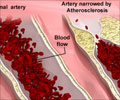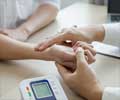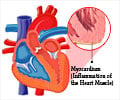
‘Small molecule treatment of human cardiomyocytes leads to Purkinje differentiation resulting in key Purkinje cell gene expression and conduction of fast electrical signals; comparable to native Purkinje cells.’
Tweet it Now
Currently, there are no treatments for cardiac cell death, the underlying basis of cardiovascular disease (CVD), which remains the leading cause of death globally. By 2035, CVD prevalence is expected to increase to 45.1% (more than 130 million people) in the US while the financial cost is projected to increase by more than $131 million over the next two decades, reaching an astounding $1.1 trillion.McConnell examined an alternative and unexplored cell type in cardiac regeneration - the cardiac Purkinje cells – which are specialized cells from the cardiac conduction system (CCS) responsible for electrical signals that enable the heart to contract and relax synchronously.
Electrical Conduction System of the Heart
The results indicate that it may restore the efficiency of electrical signal conduction, resulting in improvements in cardiac function.“We are the first to demonstrate the successful direct reprogramming of human cardiomyocyte cell lines (AC16-CMs and iPSC-CMs) into Purkinje-like cells using a unique cocktail of small molecules,” reports both McConnell and the first author of the study, Nicole Prodan, a doctoral student while in the McConnel lab. “Direct reprogramming is a technique that produces an epigenetically unstable ‘plastic’ state on the cells to facilitate the conversion of a fully differentiated and matured cell into a different new cell type.”
While several pharmacological treatments are currently available for heart failure, they do not prevent, cure or improve myocardial cell death and fibrotic scar formation, which are the main contributors to provoking heart failure.
“The only cure is a heart transplant, which is unfortunately scarce,” said McConnell.
Advertisement
“This is because often the cardiac myocytes implanted cannot be electrically activated in synchrony by the recipient’s heart and will contract at a different pace from the rest of the heart, inducing arrhythmias,” said McConnell.
Advertisement
McConnell’s collaborators, Robert J. Schwartz, Hugh Roy and Lillian Cranz Cullen Distinguished Professor of biology and biochemistry, and Preethi Gunaratne, Moore’s professor of biology and biochemistry are co-authors on this study.
Source-Eurekalert















